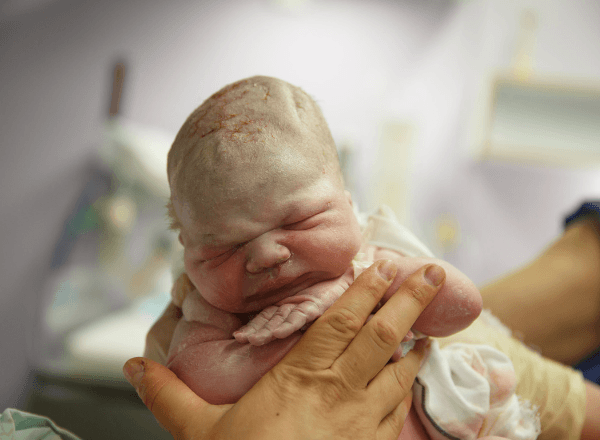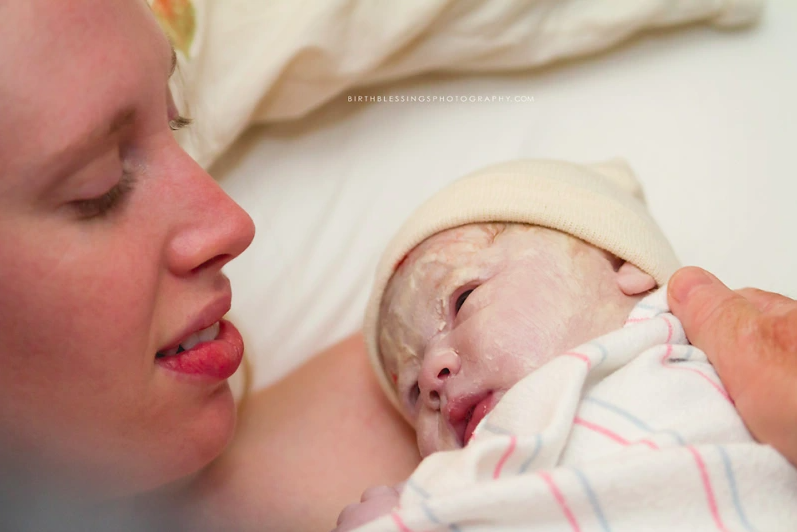It’s deeply ingrained, this habit of putting hats on newborns. Search online for images of newborns and almost all of them are togged up in a woolly hat, for all the world like they are about to go outside for a snowball fight. So why do we do it? And why do so many midwives and doctors insist that babies’ heads are covered the minute they emerge from the wardrobe-less confines of the womb?
The answer I mostly get from midwives when I ask is that babies (and humans in general) lose lots of heat from their heads and can get cold. This is a myth; age-old research that has been debunked many times since then. And yet, when it comes to newborn babies, we still perpetuate this old wives tale. But why does it matter?
When we put a hat on the baby immediately post birth, we sabotage the oxytocin flow for the mother because she can’t smell that wet head and stroke it…causing contractions that’ll keep her uterus toned and thus prevent haemorrhage.
Someone who has just given birth is in a parallel dimension. Birth is a foreign country; in those minutes after birth, she must travel back to this time and place and re-enter her own body. Parents need to ground themselves in the here and now after their epic quest, by touching, smelling and kissing the baby. Left to themselves, feeling unobserved, parents will lower their faces to that crown that only moments before stretched perineum and heart wide open, and drink their baby in. Watch carefully and you’ll notice it cause uterine contractions.
The ritualistic hatting of the baby is all too often the seed that disrupts a physiological birth of the placenta. Rather that remaining safe in their golden bubble of oxytocin immediately after the birth, the midwife asks if they have a hat for the baby, or grabs one knitted by a stranger and swoops in to cover that delicate little scalp. Sometimes there is fuss and noise as people search through suitcases for hats. The hats usually slip off the moment they are put on, so there is repeated fussing around the baby. It wakes the mother up, pulling her out of her dream-like oxytocin high which all too often leads to problems with the placenta being born.
Just a reminder: a newborn’s temperature is regulated by skin to skin contact. The mother’s or birthing parent’s chest is nature’s incubator; if the baby is too cold, blood will rush to the mother’s chest to warm the infant. The birthing environment is almost always toasty warm and if it isn’t, steps can be taken to warm the dyad. Skin to skin also regulates the baby’s heart rate and breathing and increases the chances of breastfeeding getting off to a flying start.
As Carla Hartley, birth activist, says, “No hatting, No patting, no chatting” in those fragile hours after birth. In other words, if all is well, leave the new family be and give them peace and space to greet their newborn.
Scientists have discovered an odorless scent molecule called hexadecanal, or HEX, that is released by humans and impacts aggressive behaviour. The HEX molecule is the most adundant molecule released on the newborn’s head. The researchers found that this molecule reduced aggression in males (biologically important as infanticide is a relatively common event in the mammalian world) and increased aggression in females (key to infant protection).
— Source: Eva Mishor et al., Sniffing the human body volatile hexadecanal blocks aggression in men but triggers aggression in women, Science Advances (2021). DOI: 10.1126/sciadv.abg1530
Source articles:

